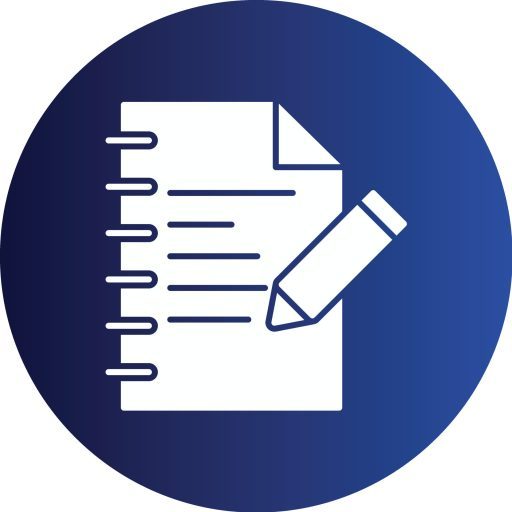E232 Exploring Childhood and Youth Tutor-Marked Assignment (TMA01) | The Open University
E232 TMA 01 Part A (Worth 80% Of The Marks For TMA 01)
Read the following article:
Trejo Trello, K. (2023) ‘Fixing the global childhood obesity epidemic begins with making healthy choices the easier choices – and that requires new laws and policies’, Available at: The Conversation fixing-the-global-childhood-obesity-epidemic-begins-with-making-healthy-choices-the-easier-choices-and-that-requires-new-laws-and-policies-207975 (Accessed 4 March 2025).
In your own words, outline the key ideas and arguments reported by Trejo Trello (2023) and discuss how these ideas relate to relevant module materials. (1000 words)
E232 Part B (Worth 20% Of The Marks For TMA 01)
Reflect on your learning, and your motivations for studying childhood and youth. (500 words)
This reflective piece of writing should include the following:
- Describe your own particular interests in childhood and youth which motivated you to study this module, or the qualification you are studying.
- Describe one unit from Block 1 of the module materials so far that has influenced, reinforced or changed your views on a particular topic.
- Identify two specific areas relating to Part A of your assignment on which you would like feedback from your tutor.
Your TMA will be marked according to the marking criteria. Please copy and paste the Word version of the marking table to the end of your assignment, so that your tutor can use it to provide feedback.
Before you start work on your TMA, make sure that you have read all the guidance notes set out on the following pages. If you want to see all the guidance at once, use the ‘View as single page’ option (with the ‘eye’ icon next to it) on the left of the screen. You can also print this page if you wish.
You must include both parts of the TMA in one Word document and submit this to your tutor via the eTMA system by Thursday 20 November 2025.
As an OU student, you have free access to Microsoft Word as part of Microsoft Office 365.
This TMA is worth 10% of your total module grade.
E232 Marking Criteria
Your tutor will be using the marking criteria outlined in the table below to decide your mark for TMA 01. Ensure that you read the different criteria and keep them in mind when completing your assignment. Before submitting your assignment, compare what you have written to each of the criteria listed in the table. What band do you think you deserve and why? Is there anything you could do before submission that would improve that?
Most of the marking criteria are generic and will apply to all the assignments on this module, so use your feedback to see which areas you may need to improve upon for next time. Some criteria are specific to this particular TMA.
Remember to copy and paste this marking table to the end of your assignment. Please use the Word version of the table to do this.
View large table
E232 TMA 01 marking criteria
GENERIC MARKING CRITERIA
| Criteria | Pass 1 (85–100) | Pass 2 (70–84) | Pass 3 (55–69) | Pass 4 (40–54) | Fail (0–39) |
|---|---|---|---|---|---|
| Focus on the question | Fully and explicitly focused on the question throughout. | Most of the answer is well focused on the question. | Answer mostly relevant to question but relevance is not always made explicit. May discuss the general topic area rather than the specific question. | Limited focus on the question, but some potentially relevant material used. Able to identify and address main issues raised by the question. | Very limited or no focus on the question. |
| Knowledge and understanding of module material | Excellent knowledge and understanding of wide range of relevant module material (and other relevant sources where required). | Good knowledge and understanding of a range of relevant module material (and other relevant sources where required). | Fair knowledge and understanding of the most relevant module material (and other relevant sources where required). May be some minor inaccuracies or misunderstandings. | Knowledge and understanding of some module material (and other relevant sources where required). Inaccuracies or misunderstandings present. | Very little or no knowledge or understanding of module material (and other relevant sources where required). |
| Critical analysis and evaluation | Shows high level of critical analysis and evaluation of different viewpoints. | Evidence of critical analysis and evaluation of different viewpoints. | Mainly descriptive. Some evidence of critical analysis or evaluation of different viewpoints. | Heavily descriptive. Little evidence of critical analysis or evaluation. | Entirely descriptive. Very little or no evidence of critical analysis or evaluation. |
| Structure and argument | Very well-structured, coherent and logical argument. | Clearly structured argument. | Adequate structure; argument may be unclear at times. | Lacks structure or clear argument. | Very limited or no structure. |
| Use of evidence and references | Almost all points supported by relevant and well-chosen evidence. Complete and accurate referencing. | Most points supported by relevant evidence from module materials. Mostly complete and accurate referencing. | Some use of appropriate evidence from module materials to support points. Mostly complete and accurate referencing but with some errors. | Some attempt to use evidence but limited or lacking in relevance. Some attempt at referencing, with errors or gaps. | Very little or no use of evidence. Inadequate or missing referencing. |
| Clarity of writing | Concise and highly accurate, combined with an appropriate academic style. | Clear writing in appropriate academic style. | Generally clear writing. Some points may be unclear. Less academic style in places. | Many points unclear. Writing may be informal or lack academic style. | Writing difficult to understand. Inaccuracies and inconsistencies that affect meaning. |

